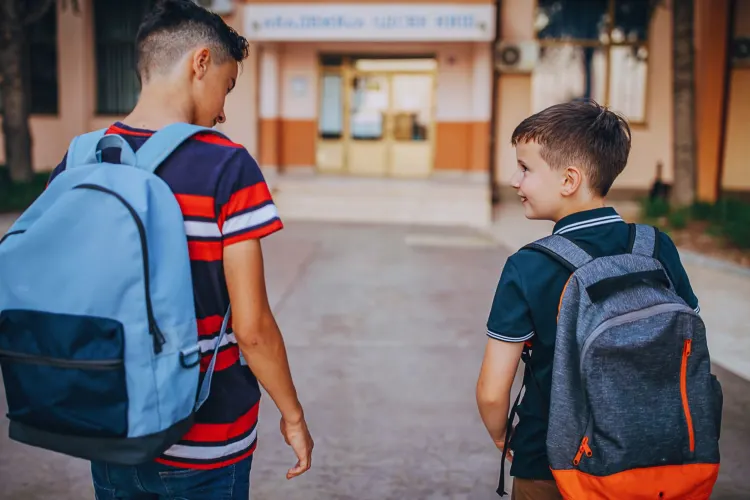Education
Back to School 2025: What Teachers Really Need on Their Supply Lists
Published
2 months agoon
By
IQnewswire
Every summer, just as the last bell of term fades, teachers across the country find themselves doing a familiar mental checklist. They walk through empty classrooms, noticing scuffed tables, half-dried glue sticks, and dwindling piles of Exercise Books. The air still carries the faint scent of crayons and marker pens, but the shelves are already half bare. Within weeks, the back-to-school rush begins again, as teachers and school administrators prepare to restock, reorganise, and rethink what the new academic year will require.
The return of the essentials
Some things never change. Every classroom still needs the basics—pens that do not leak, notebooks that can survive heavy use, and storage trays that actually fit on the shelves. Yet even among these familiar items, trends emerge. Exercise Books remain one of the most requested supplies, but their form is changing. Teachers now look for wider margins, thicker paper, and covers sturdy enough to last beyond one term. Many schools are also opting for recycled or sustainably produced paper as part of their environmental commitments.
“By the end of the year, our old notebooks looked like they’d been through a storm,” one Year 5 teacher said with a laugh. “Now we look for exercise books that can handle glue, folding, and the occasional spill. Durability really matters.”
It is a sentiment shared across many schools. The focus is no longer on quantity alone but on practicality and longevity. Teachers want materials that make their daily routines easier, not harder.
The rise of interactive tools
Alongside the traditional supplies, modern classrooms are now driven by technology. Interactive displays and smart boards have become almost as essential as whiteboards once were. Teachers value them not only for engaging lessons but for managing hybrid classrooms, where some pupils might be learning from home. A Year 9 English teacher described it simply: “It’s like having everyone in the same room, even when they’re not.”
This shift toward interactive teaching means supporting tools are also in high demand. Wireless presenters, document cameras, and tablets are helping teachers adapt lessons instantly. Instead of static textbooks, digital teaching aids allow for constant updates, making learning more flexible and relevant. Exercise Books still play a role here, bridging the digital and physical worlds. Many teachers combine on-screen tasks with handwritten reflection exercises, believing that writing by hand helps students absorb information more deeply.
Organised classrooms, calmer minds
Organisation remains another major focus for the year ahead. Classroom organisers, storage drawers, and modular shelving units help teachers reclaim space and reduce stress. After years of cluttered cupboards and overstuffed drawers, educators are turning to minimalist setups that make both teaching and tidying more efficient.
“Every label matters,” a science teacher explained. “When the classroom is organised, pupils settle quicker and lessons run smoothly. I spend less time searching for things and more time teaching.”
Schools are also investing in furniture that supports better posture and comfort. Ergonomic pens and pencil grips are becoming a staple, especially in early years and primary classrooms where handwriting habits are still developing. Lightweight furniture, adjustable desks, and sensory seating cushions are appearing on supply lists more often, blending practicality with wellbeing.
New priorities for 2025
The coming school year brings new priorities shaped by the changing needs of pupils and the growing influence of hybrid learning. Digital literacy has moved from an optional skill to a core part of the curriculum. Teachers are requesting headsets, webcams, and laptop stands to make both in-person and remote lessons seamless. Many schools are also upgrading classroom Wi-Fi and power access to keep pace with the technology now used daily.
Another growing area is sensory learning. Materials that engage touch, sound, and movement are becoming more common in both mainstream and special education classrooms. Textured mats, soft lighting, and calming corners give pupils space to refocus when overwhelmed. Teachers note that these small details often have a big impact on concentration and emotional balance.
Exercise Books are also part of this shift. Some schools now use colour-coded notebooks to help pupils with focus and organisation. Blue for writing, green for science, yellow for creative work. These small visual cues reduce confusion and help pupils build independence. In classrooms where children face attention challenges, even the texture of paper can make a difference.
Teacher insight and real-world feedback
When asked what they wish suppliers understood better, teachers often mention balance. They want supplies that look appealing but can withstand constant handling. “We love bright colours and fun designs, but they have to last,” said one primary teacher from Manchester. “There’s nothing worse than a set of pens drying up halfway through term or an Exercise Book cover tearing in week two.”
Others emphasise value over novelty. A secondary maths teacher put it plainly: “The best tools are the ones that quietly work. A solid calculator, a ruler that stays straight, a pen that doesn’t smudge. Those things make the difference every single day.”
Teachers also spoke about time. The first few weeks of term are always hectic, and delays in deliveries can throw off entire lesson plans. Having dependable suppliers who understand seasonal demand has become just as important as product quality.
How suppliers can prepare
For suppliers, anticipating the 2025 back-to-school season means more than repeating last year’s stock list. Schools are blending old and new, physical and digital, traditional and sensory. That means offering a mix of durable Exercise Books, high-quality pens, reliable storage, and adaptable tech support. Sustainable materials and recyclable packaging are no longer niche requests—they are expectations.
The smartest suppliers are already tracking what teachers ask for mid-year, not just at the start. Items that run out early or draw consistent praise from staff often reveal where future demand will rise. Communication matters too. Regular feedback loops with schools help suppliers stay ahead of shifting trends and design better products that genuinely meet classroom needs.
As August approaches and the familiar rhythm of preparation begins again, the message from teachers is clear. They want tools that work, spaces that inspire, and supplies that last. Exercise Books will still be stacked high on desks. But beside them will be touchscreens, sensory aids, and digital learning tools—all part of a school year that blends tradition with innovation. In that balance lies the true shape of education in 2025: organised, creative, and always evolving.

A Guide to Launching Your Counselling Career Online

Keep Every Device in Your Life Private: The Real Deal on iTop VPN

Common Types of Hose Clamps

10 Thoughtful New Year Gifts to Start the Year Right

Preparing Your Property for Every Season With Professional Help

Why Outdoor Work Is Becoming More About Strategy Than Strength

Why Simplicity Plays a Bigger Role in Miniature Painting Than Most Players Expect

Inside the Rise of Targeted Supplements for Women’s Health

Why AI Is a Game Changer for New Developers

Enhancing Business Operations with Address Lookup API and Validation Tools

Who Is Marlene Knaus? The Untold Story of Niki Lauda’s First Wife

Curious About JOI Database? Read This First Before You Click Anything

Jacqueline Bernice Mitchell: The Inspiring Story of Jerry Rice’s Ex-Wife

Where Is Barbara Boothe Now? Inside Her Life After Larry Ellison

Should You Use Wooflix in 2025? Honest Review and Best Alternatives

Where Is Noelle Watters Now? Jesse Watters’ Ex-Wife’s Life After Divorce

Alisande Ullman Today: What Happened After Her Divorce from Leslie Nielsen?

Mickey Middleton: The Untold Story of Bryan Cranston’s First Wife

Where Is Tanya Hijazi Now?: All About Rick James’ Former Wife

Wendy Lang: Meet the Therapist Married to Cenk Uygur

A Guide to Launching Your Counselling Career Online

Keep Every Device in Your Life Private: The Real Deal on iTop VPN

Common Types of Hose Clamps

10 Thoughtful New Year Gifts to Start the Year Right

Preparing Your Property for Every Season With Professional Help

Why Outdoor Work Is Becoming More About Strategy Than Strength

Why Simplicity Plays a Bigger Role in Miniature Painting Than Most Players Expect

Inside the Rise of Targeted Supplements for Women’s Health

Why AI Is a Game Changer for New Developers

Enhancing Business Operations with Address Lookup API and Validation Tools
Categories
Trending
-

 Celebrity6 months ago
Celebrity6 months agoWho Is Marlene Knaus? The Untold Story of Niki Lauda’s First Wife
-

 Entertainment5 months ago
Entertainment5 months agoCurious About JOI Database? Read This First Before You Click Anything
-

 Celebrity3 months ago
Celebrity3 months agoJacqueline Bernice Mitchell: The Inspiring Story of Jerry Rice’s Ex-Wife
-

 News3 months ago
News3 months agoWhere Is Barbara Boothe Now? Inside Her Life After Larry Ellison
